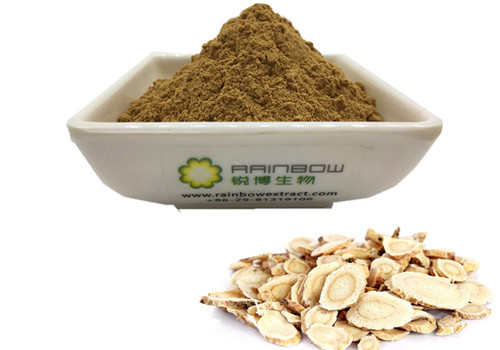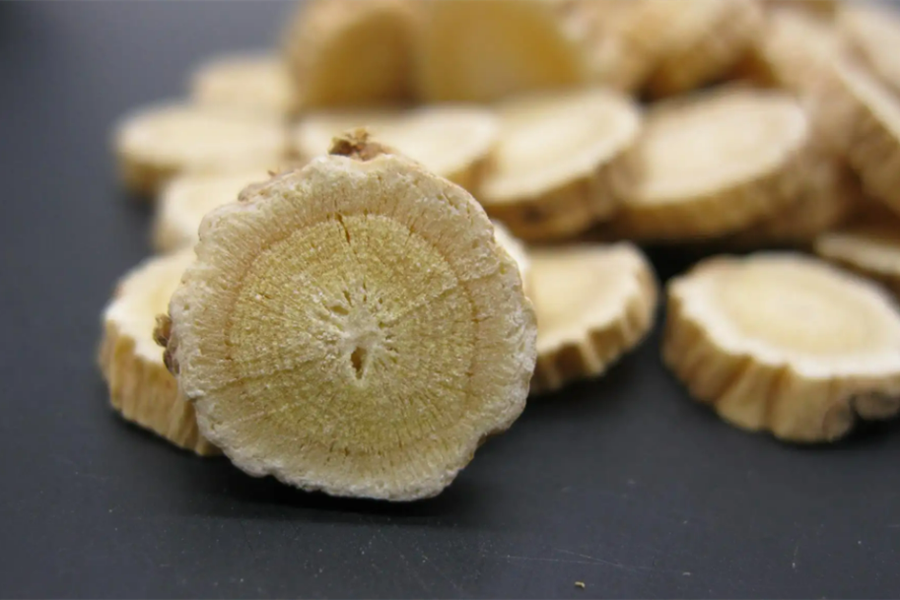How Was Total Astragalosides Extracted?
So far, people have extracted dozens of active ingredients from astragalus root, including total Astragalosides, astragalus polysaccharides, flavonoids, amino acids and a few trace elements. Astragalosides and Astragalus polysaccharides were the most abundant. In order to extract Astragalosides more efficiently, we should be familiar with various extraction methods and their advantages and disadvantages, and how to select flexible extraction methods according to extraction conditions. At present, there are several methods for the extraction of total Astragalosides, such as the Methanol extraction method, macroporous resin method and ultrasonic method ans so on. Each method is different in application conditions, effects and extraction efficiency. Today we will introduce them in detail.
What is Total Astragaloside?
Saponins are composed of saponins and sugars. According to the structure of saponins, saponins can be divided into two categories, one is steroidal saponins and the other is triterpenoid saponins. Most of the steroidal saponins do not contain carboxyl and are neutral in structure, while the triterpenoid saponins are divided into two groups according to the structure of the hydrolyzed triterpenoid saponins and triterpenoid saponins. The carboxyl group can be found in the structure, and most of the acid saponins belong to this category. Astragalus membranaceus contains a large number of saponins and triterpenes, among which Astragaloside IV is the most abundant. The solubility of saponins varies with the number of linked sugars in their molecules. They are soluble in water, methanol and ethanol, but insoluble in diethyl ether and other organic solvents with small polarity. They can be hydrolyzed by enzymes or acid solutions, and most of the sugars are glucose, galactose, rhamnose and other pentose.
The content of astragaloside IV is one of the main criteria to evaluate the quality of Astragalus. It has anti-tumor, anti-inflammatory, antioxidant, hypoglycemic and other effects, and has a wide range of pharmacological effects in anti-viral myocarditis, brain tissue protection, anti-hepatitis B virus and other aspects(Learn More about What is Astragaloside IV And Its Benefits). However, Astragaloside IV content in astragalus membranaceus is relatively low. Traditional extraction methods mainly include water decoction extraction, decoction reflux ethanol extraction, etc., which has the disadvantages of high extraction temperature, low extraction rate and being time-consuming. The latest extraction technologies include high speed centrifugal extraction, microwave-assisted extraction, ultrasonic extraction, ultrafiltration, supercritical fluid extraction, ultra-high pressure extraction, high-speed counter-current chromatography (HSCCC) extraction.
Extraction Methods of Total Astragaloside
Water boiling method
In the experiment, the total Astragaloside were extracted by multiple water decocting methods, and the optimal process was obtained: decocting astragalus with 16 times of water for 4 times for 60 min, and the content of total Astragaloside was 16.88 mg/g. The main factors for the extraction rate of total Astragaloside by water decocting method were the amount of water added and The Times of water decocting, which were the key to improving the extraction efficiency of total Astragaloside.
Methanol-diethyl ether extraction method
The plant containing saponin was extracted by methanol, and most of the methanol was recovered after the filter. The concentrated methanol solution was cooled, and the same volume of ether was added by taking advantage of the insolubility of ether, and a large amount of white precipitate was precipitated by shaking. After standing, the ether was added, and white precipitate was generated. Yellow crude saponins obtained from dry precipitates, if the purity is not required, are dissolved in methanol and precipitated with ethyl ether. This method has a simple process, less energy consumption and easy operation, but it consumes too much solvent.
Macroporous resin method
After removing the impurities from the saponins extracted with water or alcohol, the crude saponins were dissolved with a small amount of water, and the column was washed with water and eluted with ethanol using a macroporous resin column. The saponins were mainly eluted with 60-80% ethanol, and the eluent of this part was collected and concentrated to dry to obtain light yellow saponins. The adsorption of substances by macroporous resin is based on van der Waals force, and the impurities in the form of non-polar molecules are easy to be adsorbed, and the resin has many holes of appropriate size, which can be separated according to the size of molecular weight to a certain extent. During the separation process, some inorganic salts and low molecular weight sugars in macroporous resins are not adsorbable due to polarity and are easy to be eluted by water. Protein, medium and large molecular weight polysugars were removed by low concentration ethanol. Saponins with higher purity and better texture can be obtained by macroporous resin. This method has the advantages of simple operation, low cost and high recovery, and is suitable for industrial production of astragalus Astragaloside.
Ultrasonic wave method
Astragaloside was extracted by ultrasonic method, 95% ethanol was used, the volume of extraction solvent was 350ml, and the ultrasonic time was 30min. The experimental results showed that the extraction results of total Astragaloside by ultrasonic extraction method were comparable to those by reflux method, and took less time. Through experiments, scholars found the best superbiogenic extraction conditions of total Astragaloside, that is, with 70% ethanol solution of 15 times as the solvent for superbiogenic extraction for 40min, the content of about 1% of total Astragaloside extract can be obtained. The duration of ultrasonic test is an important factor affecting the yield of total Astragaloside. We can increase the yield of total Astragaloside by properly extending the duration of superbiological extraction test.
Microwave-assisted extraction
Through comparative experiments, the academic community concluded that under the conditions of the same amount of extraction agent and the same experimental duration, microwave-assisted extraction could improve the yield of total Astragaloside, and the extraction time of total Astragaloside was shorter than that of ultrasonic extraction.
Reflux method
With water and ethanol as solvents, reflux extraction of total Astragalosidefrom Astragalus components under the same conditions found that the effect of atmospheric pressure ethanol reflux extraction of total Astragaloside was worse than that of water extraction, because the water solubility of total Astragaloside was higher than that of ethanol under the same conditions. Therefore, water should be used as reflux extraction solution in the extraction of total astragalus saponins.
Supercritical CO2 extraction
Supercritical Fluid Extraction (Supercritical Fluid Extraction) is a novel extraction and separation technology developed in the last 30 years. Supercritical fluid has a density close to liquid, a viscosity close to gas, and a diffusion coefficient 10-100 times that of liquid, so it has good permeability and strong solubility for many substances. However, this method is not suitable for the extraction of all plant saponins because of the difference in molecular weight and polarity. The optimal extraction conditions were obtained by supercritical CO2 extraction of total Astragaloside of Astragalus membranaceus with a particle size of 60 mg, a temperature of 45 ℃, a test pressure of 35 MPa, a 95% ethanol solution as entrainer, extraction duration of 2.5 h, and a CO2 flow rate of 3.7 L/h.
- Dandelion Extract: What It Is, Benefits, Uses and Side Effect - April 23, 2024
- Is Berberine Extract Help For Weight Loss? - April 11, 2024
- Why Is Pysllium Husk Powder A Popular Meal Replacement Ingredient? - April 3, 2024




